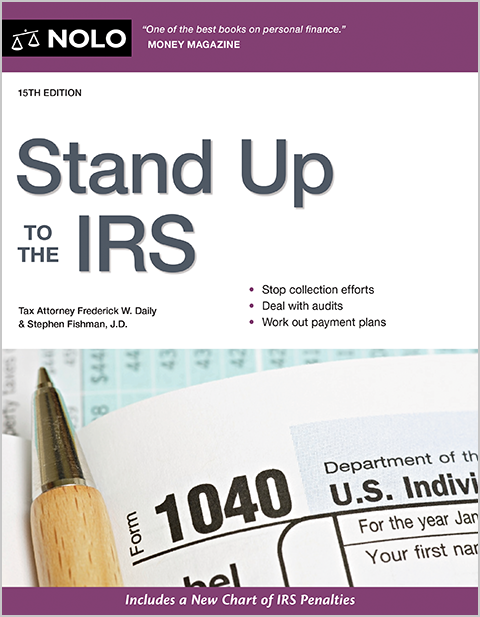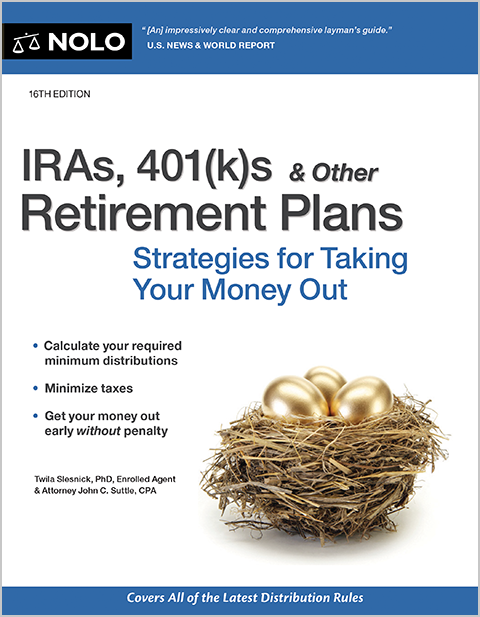Learn which fringe benefits are taxable and which ones are not.
An employee "fringe benefit" is a form of pay other than money for the performance of services by employees. Any fringe benefit provided to an employee is taxable income for that person unless the tax law specifically excludes it from taxation. Taxable fringe benefits must be included as income on the employee's W-2 and are subject to withholding.
What Fringe Benefits Are Tax-Free?
Fortunately, there is a long list of fringe benefits that are tax-free and don't have to be included in the recipients' compensation. Tax-free employee fringe benefits include:
- health insurance (up to certain dollar amounts)
- accident insurance
- disability insurance
- Health Savings Accounts
- dependent care assistance
- educational assistance
- group term life insurance coverage—limits apply based on the policy value
- qualified employee benefits plans, including profit-sharing plans, stock bonus plans, and money purchase plans
- employee stock options
- lodging on your business premises
- achievement awards
- parking expense assistance (tax-free to employees, but not deductible by employers during 2018 through 2025)
- commuting benefits (tax-free to employees, but not deductible by employers during 2018 through 2025)
- employee discounts on the goods or services the employer sells
- supplemental unemployment benefits
- de minimis (low-cost) fringe benefits, such as low-value birthday or holiday gifts, event tickets, traditional awards (such as a retirement gift), other special occasion gifts, and coffee and soft drinks
- cafeteria plans that allow employees to choose among two or more benefits consisting of cash and qualified benefits, and
- working condition fringe benefits—that is, property and services provided to an employee so that the employee can perform his or her job.
Where to Find IRS Rules for Fringe Benefits
A detailed discussion of all the rules applicable to these fringe benefits is contained in IRS Publication 15-B, Employer's Tax Guide to Fringe Benefits. Any benefit provided to an employee that doesn't comply with these rules is taxable income for that employee. For example, meals given to an employee who is required to be away from home overnight for rest are a tax-free fringe benefit. But non-overnight meals don't comply with this rule and are therefore taxable.
Taxable Fringe Benefits
Here are some of the more common fringe benefits provided to employees that are taxable to the employee:
Excessive mileage reimbursements: Payments to an employee for business-related driving in their own car that exceed the IRS standard mileage rate are taxable income.
Moving expenses. In the past, employees who moved over 50 miles for their current job (not a new job) could receive tax-free reimbursement from their employer for their moving expenses. The Tax Cuts and Jobs Act made this fringe benefit taxable for 2018 through 2025. Reimbursement of expenses for employee moves of less than 50 miles have always been taxable.
Bicycle commuting. Until 2018, employers could also provide up to $20 per month to employees who commuted to work by bicycle. The Tax Cuts and Jobs Act makes this benefit taxable to employees during 2018 through 2025.
Clothing. Clothing given to employees that is suitable for street wear is a taxable fringe benefit.
Excessive education reimbursements. Payments for educational assistance that isn't job-related or that exceed the allowable IRS exclusion are taxable.
Awards and Prizes. Cash awards are taxable unless given to charity. Non-cash awards are taxable unless nominal in value or given to charity.
Expense reimbursements without adequate accounting. An employee must provide an adequate accounting for any expense reimbursement or it will be taxable income.
Working condition fringes. A working condition fringe benefit is tax-free to an employee to the extent the employee would be able to deduct the cost of the property or services as a business or depreciation expense if he or she had paid for it. If the employee uses the benefit 100% for work, it is tax free. But the value of any personal use of a working condition fringe benefit must be included in the employee's compensation, and he or she must pay tax on it. The employee must meet any documentation requirements that apply to the deduction.
Examples of Fringe Benefit Taxation
Here are some examples of how fringe benefits might be taxed.
Example. Sam, the owner of a small architecture firm, leases a computer and gives it to his employee Paul so that he can perform design work at home. If Paul uses the computer 100% for his work, it is tax free to him. But if he uses it only 50% of the time for work and 50% of the time for personal purposes, he would have to pay income tax on 50% of its value.
The value of the personal use is determined according to the benefit's fair market value.
Example. It cost Sam $200 a month to rent the computer he gave Paul. If Paul uses the computer 50% of the time for work and 50% of the time for nondeductible personal uses, he would have to add $100 per month to his taxable compensation.
One of the most common working condition fringe benefits is a company car. If an employee uses a company car part of the time for personal driving, the value of the personal use must be included in the employee's income. The employer determines how to value the use of a car, and there are several methods that may be used. The most common is for the employer to report a percentage of the car's annual lease value as determined by IRS tables. For a detailed discussion of these valuation rules, refer to IRS Publication 15-B.
Learn More About Business Tax and Deductions
To learn more about business tax and deductions, see Nolo's Small Business Tax & Deductions section.
Talk to a Tax Attorney
Need a lawyer? Start here.
How it Works
- Briefly tell us about your case
- Provide your contact information
- Choose attorneys to contact you
- Briefly tell us about your case
- Provide your contact information
- Choose attorneys to contact you

